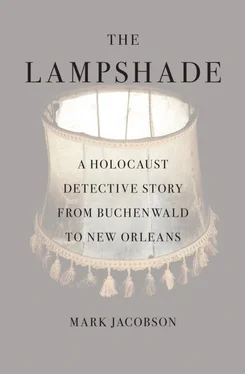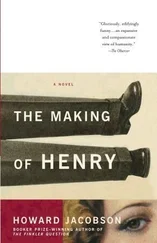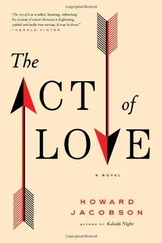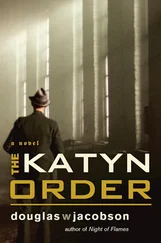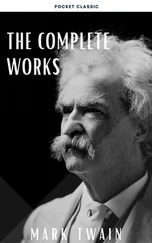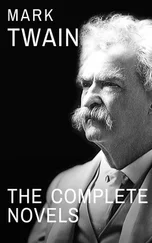Local color writers have been milking the spiked treacle of New Orleans’s seedy hoodooism for more than 150 years, but this was hard to beat. Dominici, in the role of a forty-year-old subtropical Fagin, had rounded up a dope-fiend krewe of yats and entered into a compact with a number of French Quarter art dealers, notably one Peter Patout, a descendant of a leading antebellum Louisiana sugar plantation family, to steal and sell a large parcel of the city’s most treasured commodity: the dead, or at least the accoutrements of the dead. The dealers kept some of the stuff, sold the rest. A six-foot-tall statue of the Virgin Mary taken from Lake Lawn was selling at a French Quarter shop for $5,200. Other items taken from Orleanian cemeteries began turning up in antique stores in Los Angeles and London, some going for as much as $50,000. According to the Times-Picayune, cops had recovered artifacts estimated to be worth a million dollars but believed that there was “still ten times that out there.” The thefts provoked public outcry across class and racial lines.
Perhaps it has to do with those bodies entombed above the ground, never quite consigned to the finality of having stern Protestant dirt flung across their face, but even a newbie Bywater Bone Boy calling out to the predeceased on Mardi Gras morning knows that in New Orleans, you can stomp someone in a bar, spray bullets from a passing car, murder your parents, and that’s just a call to the NOPD, who may or may not get around to it in due time, blue lights flashing. But you do not mess with the dead. You do not, no matter how desperately depraved you may be, desecrate those waterlogged, moss-covered cemeteries, trash those marble-lined pathways that Walker Percy, the greatest of the New Orleans local color writers, even better than the obscurantist Faulkner, called, in his best tourist pamphletese, “tiny lanes as crooked as old Jerusalem, meandering aimlessly between the cottages of the dead.”
These were not just any dead. As the Times-Picayune reported, “The thieves hit the final resting places of some of the best-known New Orleans families, including the restaurant-owning Brennans; the Brocatos, known for dispensing Italian ice cream; and the jazz musician Louis Prima, of Louis Prima and Keely Smith fame.”
If the bandits had raided only the graves of Comus, the sarcophagi of the uptown rulers, expensively capped teeth might be gnashed, but few hoi polloi tears would have been shed. But this was a violation of the eternal rest of the immigrants, the Irish and Italians who came to the city in the late 1800s when New Orleans was the second-largest port of entry in the country behind Ellis Island, the dead of those who’d arrived with nothing and made the new money that kept the place going beyond the stink of the Confederacy when to be called a dago in the Quarter often meant running for your life right behind the blacks. No doubt the immigrants who made it big had profited handsomely from Jim Crow laws, becoming rich during those soul-deadening times when the only nonwhites seen around the hot spots of the city’s famous heart-attack cuisine were smiling, always smiling waiters. But at least they redistributed the wealth from the hands of the plantation class, extending democracy by running businesses based on providing pleasure, even if it was often tourist pleasure.
These were the dead plundered by Dave Dominici, whose grandfather, Papa Tony, came to New Orleans from Palermo in 1910 and, in the manner of so many immigrants who made good, sold enough pasta out of his Colonial Macaroni factory to advertise on New Orleanians’ favorite horror movie TV show, The House of Shock, hosted by Morgus the Magnificent.
Eight years after his cemetery bandit arrest, kicking back in “the sitting room” of his Katrina-ravaged house, Dave Dominici flipped through his cemetery bandit clippings with a mix of regret, nostalgia, and bravado. “Twenty-two times we were mentioned on the front page, twenty-two,” he intoned, pausing over a photo of the distraught Brennan family in front of their desecrated Lake Lawn mausoleum.
“I know I shouldn’t have done it and I don’t blame these people for getting upset. I’d feel the same way if someone stole from my gramps’s tomb. But I was broke and I had this habit, so do the math on that.” The haphazardly colored images from Dave’s malfunctioning big-screen TV flitted across the cracked ceiling. When he was first arrested, they said he was looking at life in prison, on account of his two previous felony convictions, on drug and burglary charges. This prospect was reduced due in part to the contrite Dominici’s efforts to help recover the stolen objects. But still, five years is like forever when you’re ticketed for Angola.
“Angola Prison,” Dominici said, with dread befitting the fearsome 18,000-acre “farm” in West Feliciana Parish, the largest maximum-security prison in the United States, home to as many as 5,000 bad men at a time, many of whom will never again walk free.
Angola was no picnic; you did what you had to to survive. If this included alliance with the Aryan Brotherhood, Angola’s leading white-power gang, so be it. “I’m as proud of my race as the next fella, but I wasn’t into that stupid Nazi shit,” Dominici said. “But if you had two thousand black guys trying to punch a hole in your scrotum with a sharpened Bic pen, you’d be Heil Hitlering all over the place, too. Moses would have done the same.”
Dominici had no complaints about his punishment. What bothered him was how the art dealers like Peter Patout “got off light” and left him holding the bag. “It was all their idea,” Dominici moaned, his eyes bulging slightly from his head. “All along they’re buying this stuff from me for like a hundred dollars apiece, marking it up a hundred times, sending it all over the world. Then I’m in Angola reading a month-old newspaper and I see Patout is out of the joint and he’s so fucking repentant he’s joining some Save Our Cemeteries bullshit because all that matters to him is preserving New Orleans’s heritage. I’m like, ‘ Nigga, please! ’”
Since getting out of prison in 2004, he said, he’d turned over a totally brand-new leaf. The house on Piety was an integral part of that. “I got it from a little old lady for thirty-nine thousand before the storm, a real steal.” Just two blocks from the river, soon enough the place would be worth “five times that,” thanks to the coming Mississippi “Riverwalk” park that Mayor Nagin and his fatcat buddies were talking about building along the levee with the federal money supposedly pouring in for storm relief. His house had the value-added aspect of having “a historical location,” since the long-defunct streetcar named Desire used to pass right by his kitchen window making its run down Royal Street. It all made sense, Dominici said, since way back to Chalmette High School the girls were always saying he reminded them of Marlon Brando before he started playing those fat-guy parts. Who was Stanley Kowalski, anyway, but a yat?
All he ever wanted, Dominici said, with junkie earnestness, was a chance to prove himself. To be “a normal person.” The house was the big first step, “the nest egg.” Even if the Riverwalk thing got bogged down, he could still rent out the back half of the place to some strippers he knew. Sure, it needed some “cosmetics,” but that was no problem since he was a wizard at interior decoration.
“I’m not just another guy with a head on his shoulders. I’m a guy with a head on my shoulders.
“Back in school all I cared about were science and history. Logic. Not that faith business, that pie-in-the-sky religious baloney. The rest of the class is reading Dick and Jane and I’m going through Einstein. The theory of relativity. E equals MC square, Jack, that’s what I’m talking about! Teachers said, ‘David, you’re a sleeping giant, so why don’t you wake the fuck up?’ People are always underestimating me. I got a knack for innovation. I ever tell you how I was the first chicken spicer at the first Popeye’s? Ask Al Copeland if you don’t believe me. I was the one who mixed up the spicy and the mild, the fucking flour and cayenne powder all stuck up in my eyebrows like Elmer’s glue. Who knows, I’m a hell of a cook, I could have put something in there, that one missing ingredient that clinched the whole deal. People might be eating Popeye’s all over the world for no other reason than that little dash of paprika I threw in. I should have gotten something for that! I should have gotten a high-volume franchise in a good location. An honorarium. Something! But fuck it, I’m patient. My time will come. Like the cemetery bandit thing. That wasn’t nothing. It wouldn’t have made the papers so much if it was nothing. You think it’s easy running through a pitch-dark cemetery with a hundred-fifty-pound marble angel under your arm?
Читать дальше
